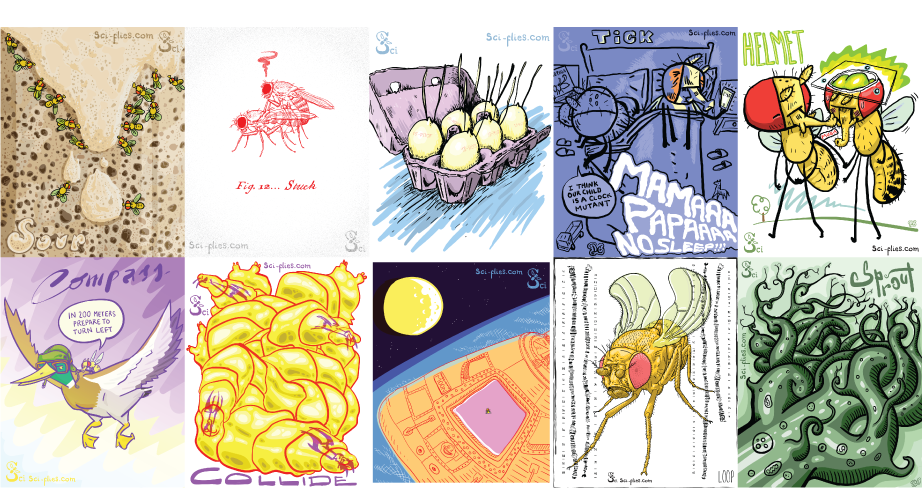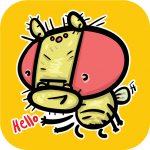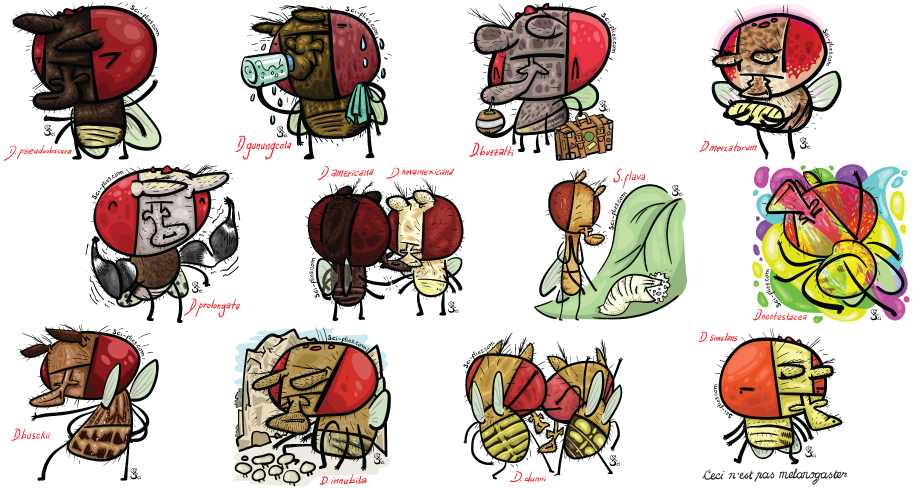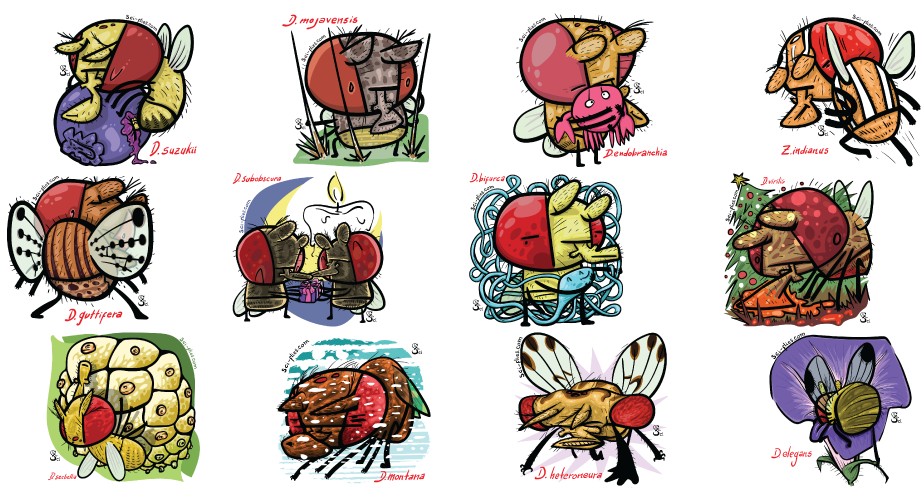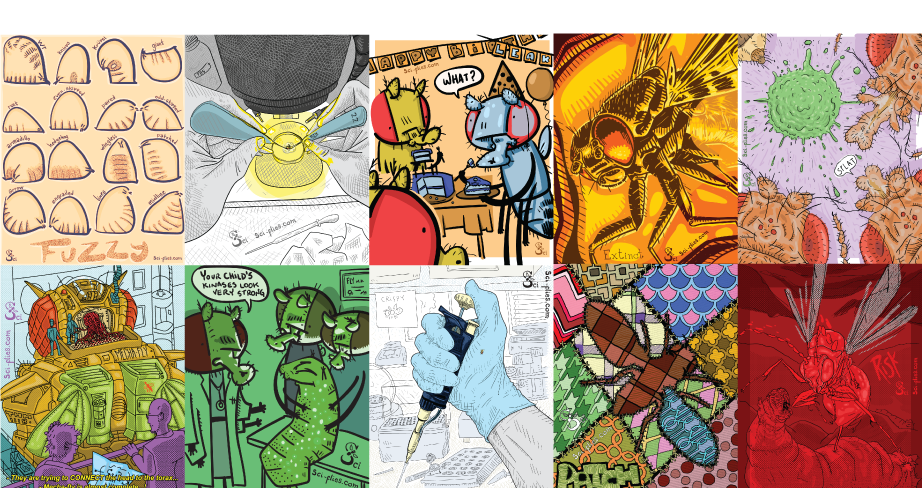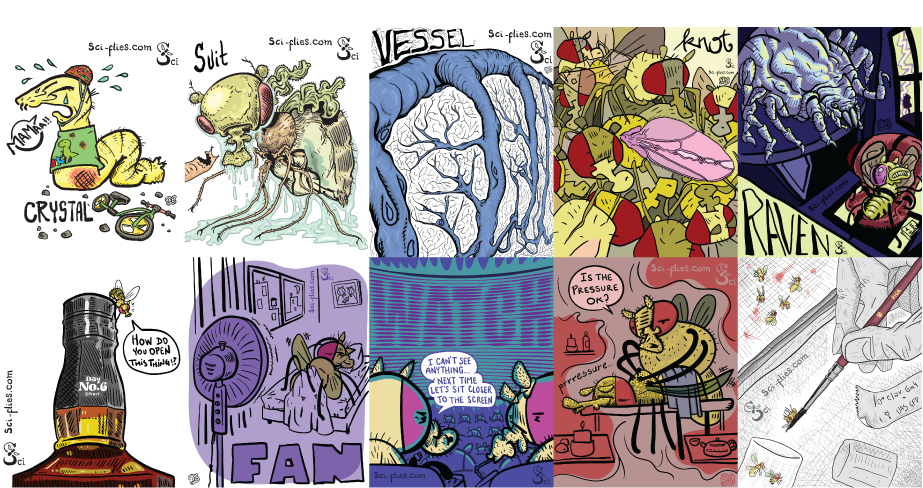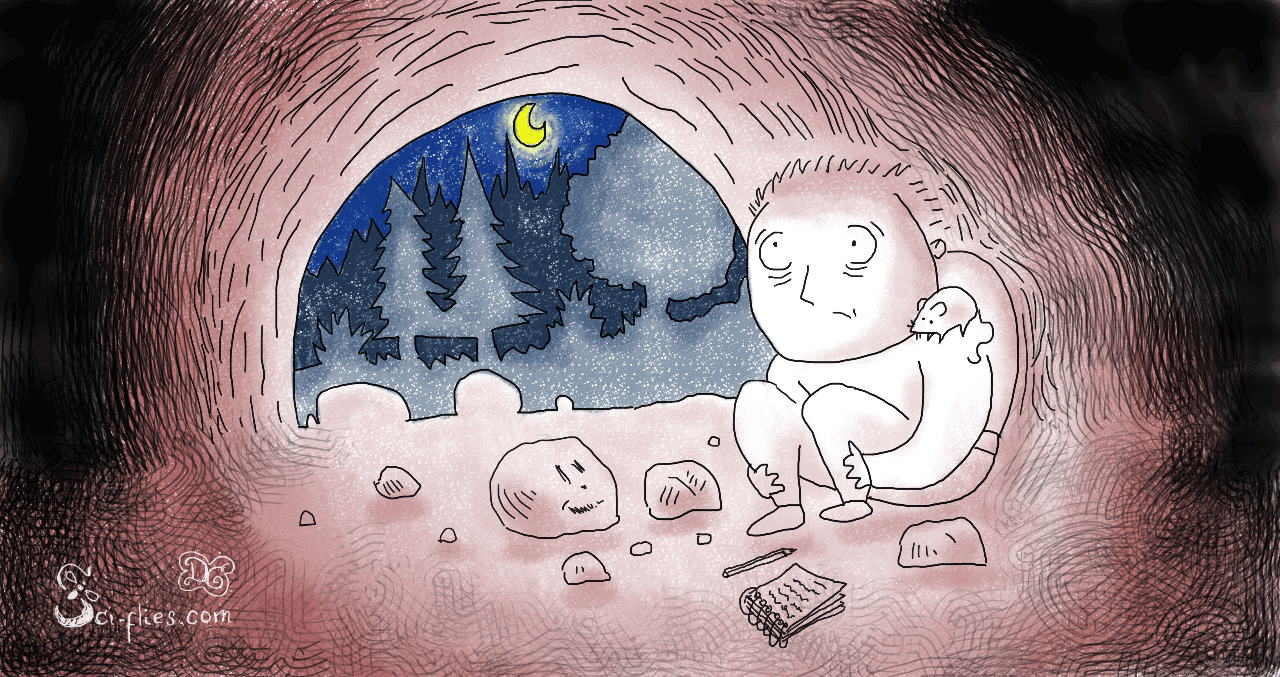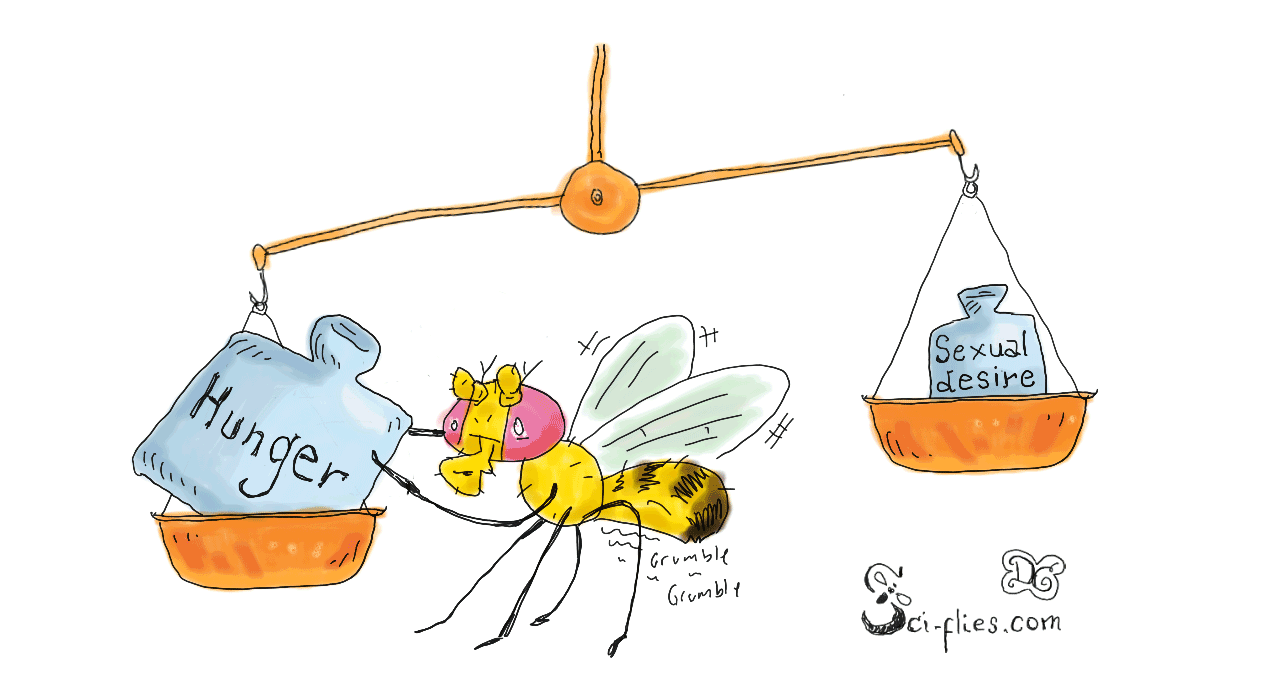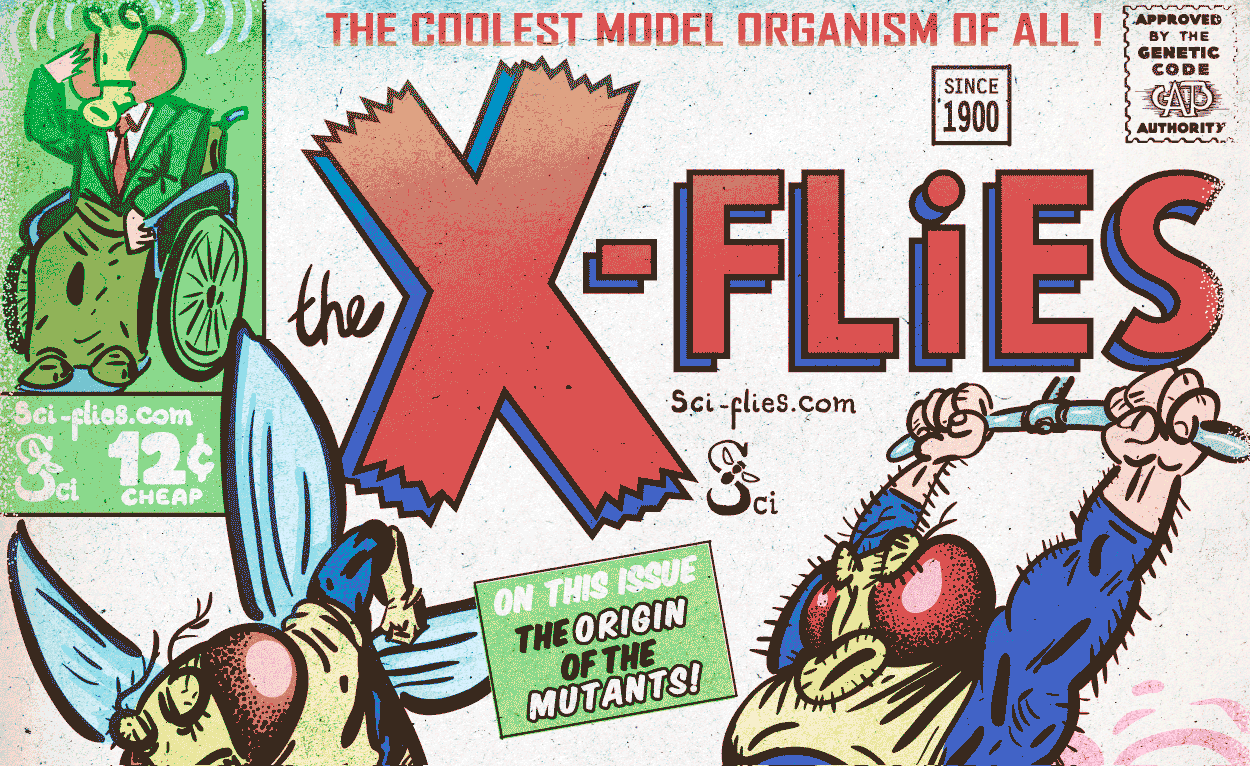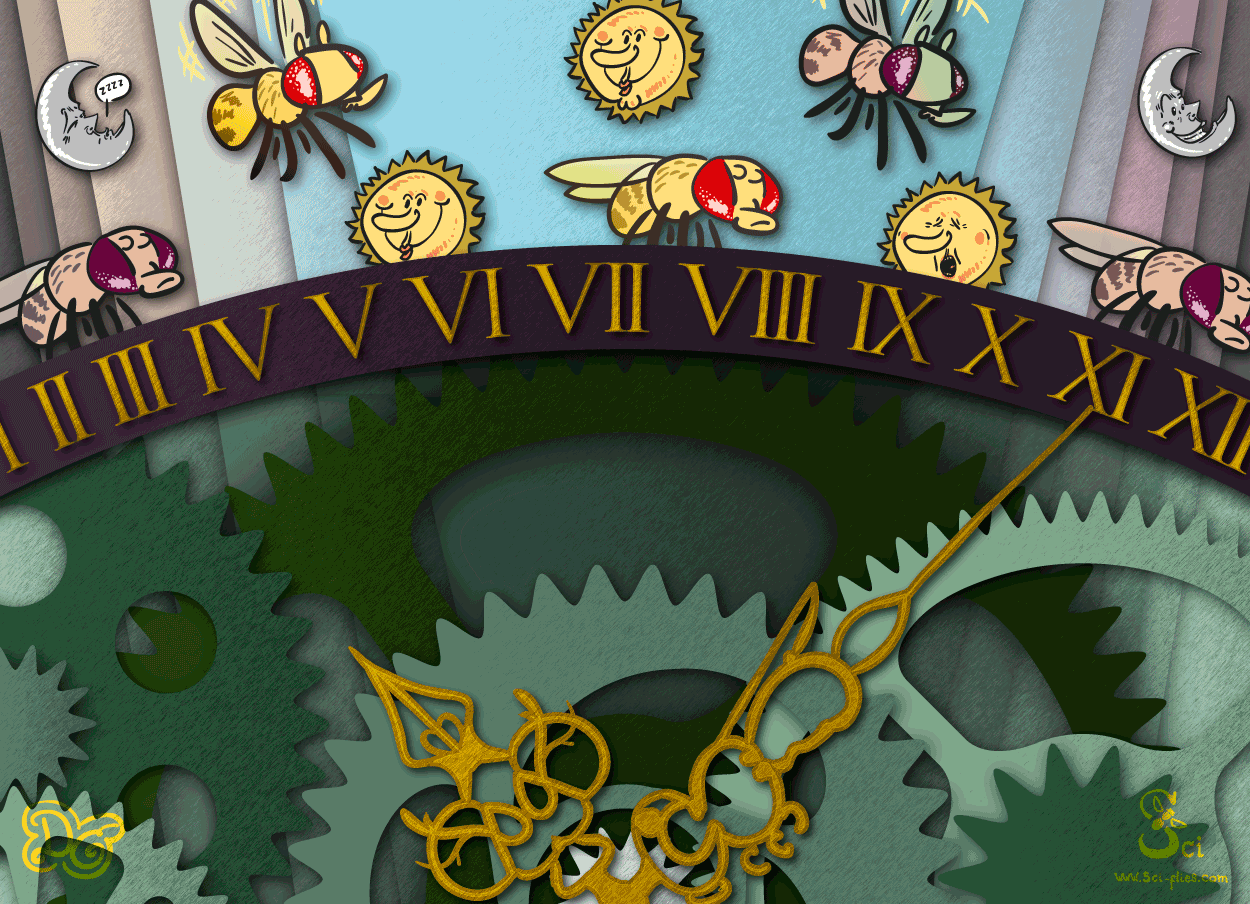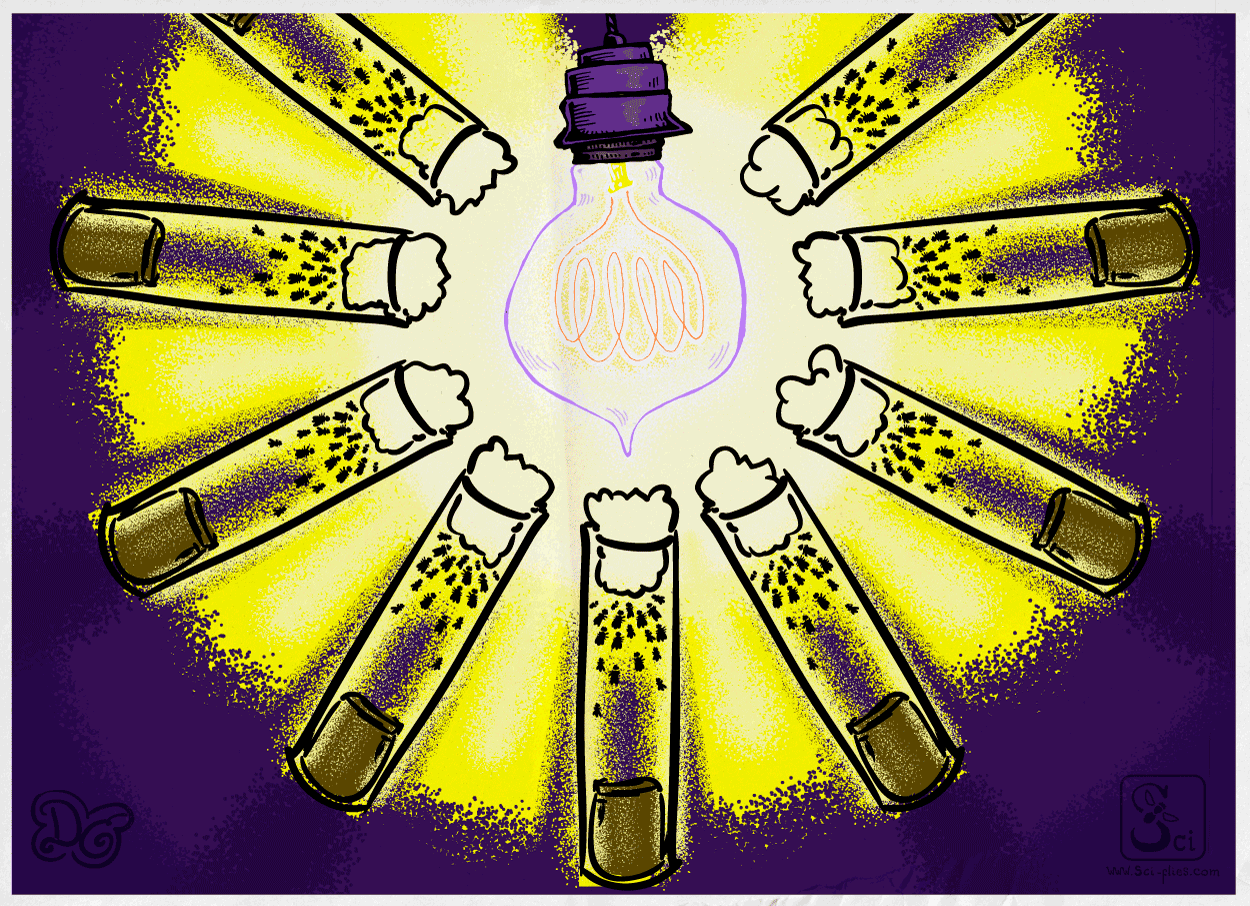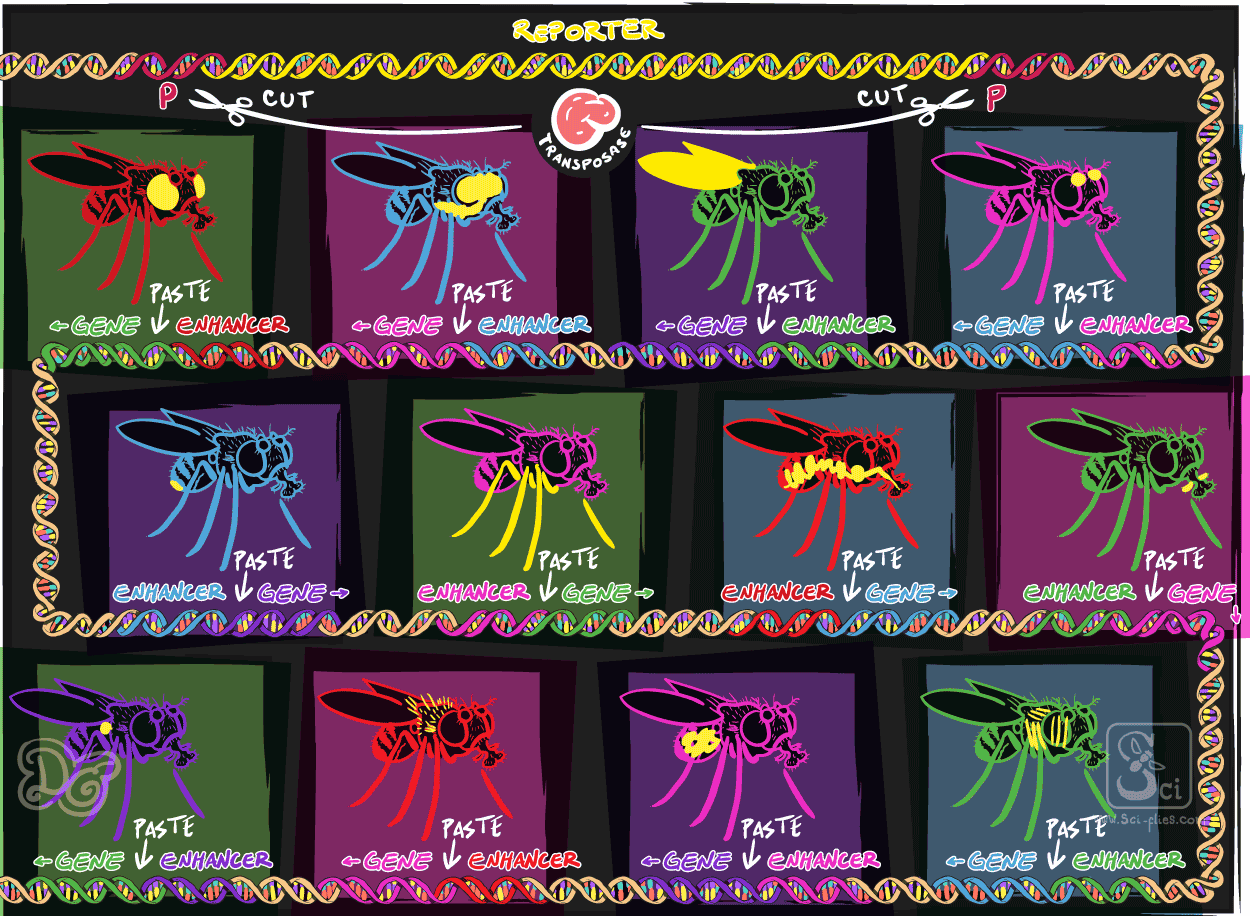Your daily dose of drosophila
Drawings based on Inktober 2021 prompts - Part II
Inktober 2021 was a great exercise for several reasons. It pushed me to be creative and come up with new ideas every day. The way I did it, it also obliged me to read papers and reviews of subjects I knew little about, to come up with something new and interesting each time.
As I got deeper into it, I started pushing the complexity of the drawings which required more time and energy. I started spending my free time on a creative activity, plugging into my favorite podcasts and concentrating on drawing. It was very rewarding and made me very happy.
One of the best things was to have met new people on Twitter and Instagram. New followers that always gave a like or a retweet and the occasional comment that led to fun facts and additional information. Also other great creators that were doing similar things and share our sensibilities.
I am very grateful for all of them, it is very nice to meet people that appreciate what we do and let us know.
So here is the 2nd part. Enjoy!
11. Sour
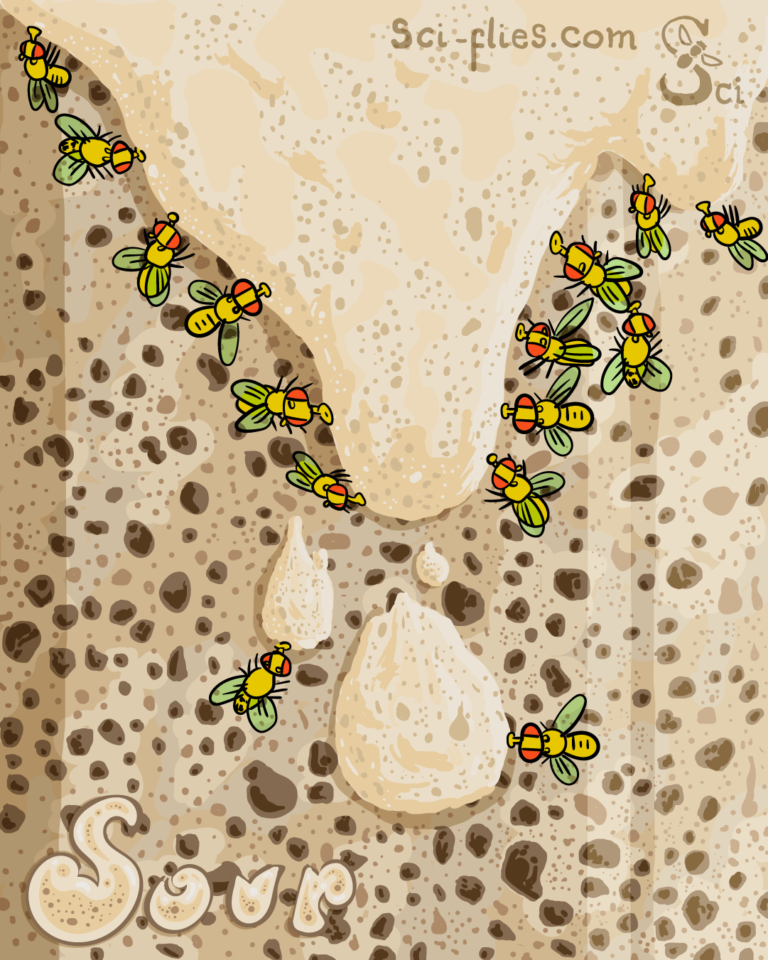
A #sour smell. #drosophila flies like to eat food fermented by yeasts and bacteria. Some typical products of #fermentation are acids, like acetic acid (vinegar). Flies have special smell receptors that allow them to sense these acids from afar. This way, they can find fermented foods from long distances. Maybe this is why I found so many articles by #sourdough enthusiasts on how to deal with “those pesky flies that try to get in the #sourdoughstarter.”
This is day 11 of #inktober2021. I used photo references to make this drawing, trying to get the feel of the bubbly spilling starter with shapes of different tones of brownish. I like the contrast of the disgusting looking surface and the cute flies.
For this drawing I followed a similar technique as with the Spirit drawing, but a bit more complex. I searched for images of sourdough starters on Google. I found one that had nice bubble patterns and one that had a nice spilled foam. Then, I picked colors from them and traced shapes from both and made a composite image. At the end I drew the flies. I did not have much times, so half of the flies are clones.
12. Stuck
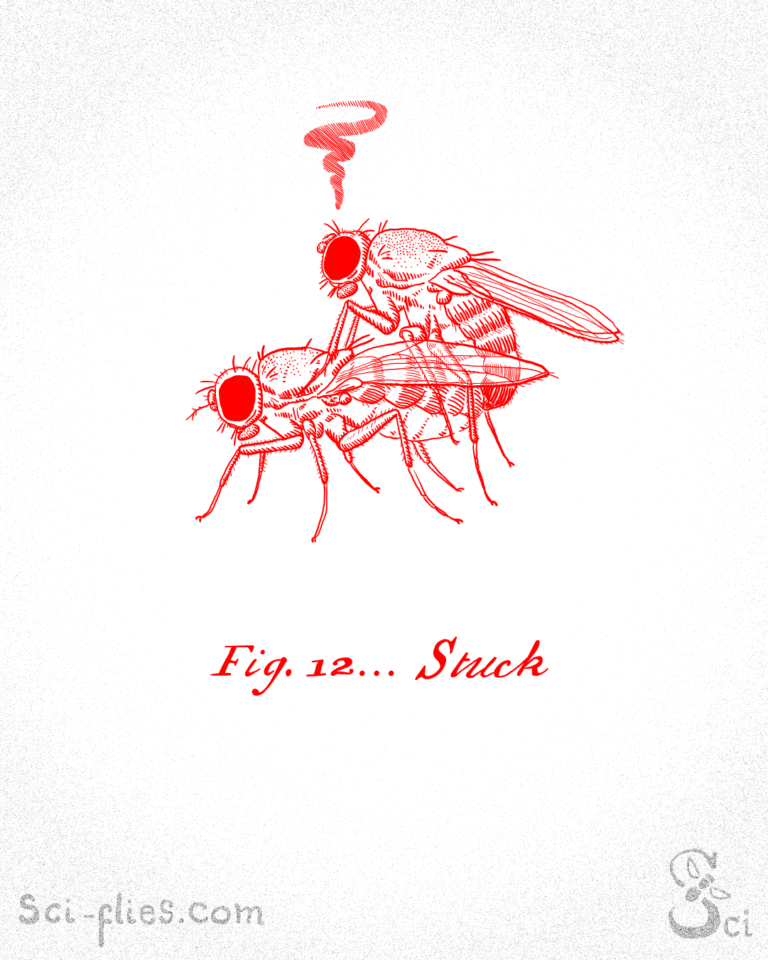
#stuck in the middle with you. In the 70s behavioral scientists started looking for individual genes involved in complex behaviors in #drosophila.
#courtship was attractive. It is a #behavior that is always the same but with many steps.
The male #fly looks at the female and then taps on her with the front legs. After that he’ll “sing” by vibrating the wings. Later he’ll lick her genitals and attempt #copulation. If she accepts they will copulate.
Many mutations that affect certain steps of the act have been discovered.
This helped us understand many of the neuronal, cellular, and physiological events that make up this behavior.
One of the first #mutants described was called “stuck” because males stay copulating longer than usual.
This is day 12 of #inktober2021, and I am late again. I had to do this drawing twice. The first did not get past the editorial (I feared it was a bit too graphic.)
Looking for info on the stuck mutant I read an old (1980) review by Jeffrey C. Hall, written at the very beginnings of the studies of the #genetics of courtship behavior.
It was very nice to read J. C. Hall’s review from the 1980s. He is one of the researchers who received the Nobel Prize for his work with Drosophila biological clock-mutants. During the 1970s Hall described many of the mutants of courtship behavior. I loved his reasoning about the possible mechanisms and functions of different genes, which have since been studied in greater depth. I highly recommend this type of reading exercise.
While the drawing is simple and minimal, it was difficult to finish. This was the second drawing I did. The first was a bit more graphic and sexual, even if they were just flies. I had to discard it and think of something different, quick. The result is based on one of the figures in the article that I mentioned earlier, but using a style reminiscent of old traditional etchings. The source is a direct tracing of figures from seventeenth century astronomy publications. I love the contrast of the clinical style with the sexual theme, emphasized by the swirl of frustration on top of the male fly’s head.
13. Roof
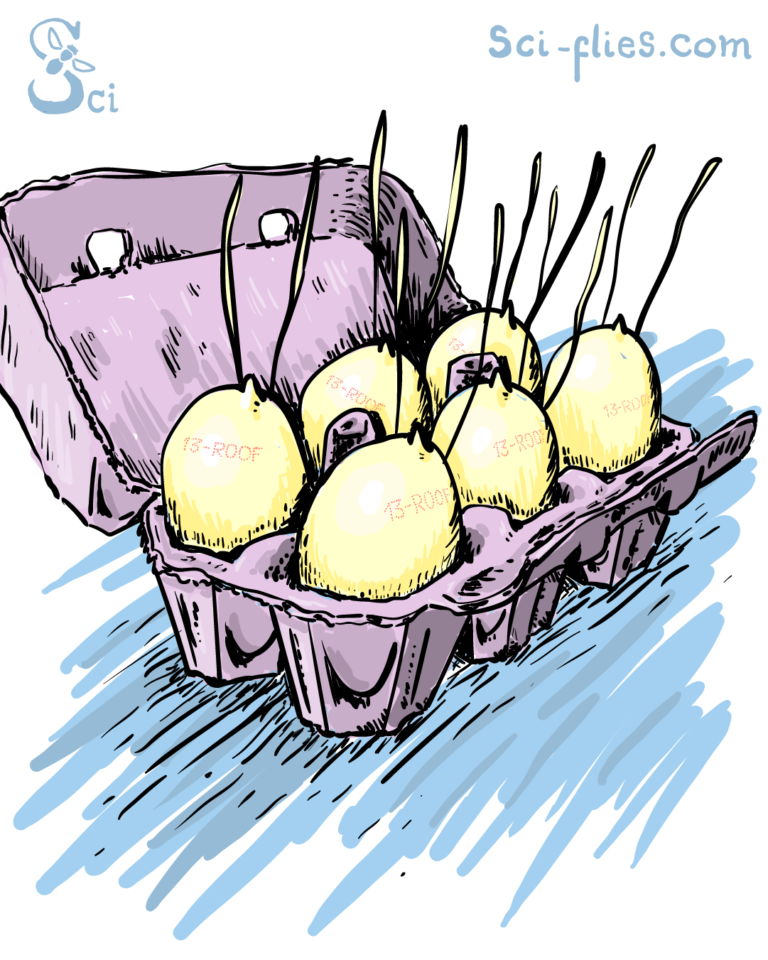
A #roof to grow under. How do #Drosophila flies help us understand #development?
During development cells have to produce other cells, they have to move, change shape, and commit to new functions.
The #eggs of Drosophila have two appendages, a pair of tubes that are thought to help the developing #embryo breathe.
How does a group of flat #cells interact, move, and change to make a tube?
During the formation of eggs inside the female #fly, two groups of cells, called roof and floor cells, will go from being a flat sheet around the egg to forming these two #beautiful tubes.
Studying how the fly #eggshell forms helps us understand general aspects of the production of 3-dimensional shapes during development, a process called #morphogenesis.
This is day 13 of #inktober2021. A simpler #digitaldrawing. I hope to catch up during the #weekend. Enjoy!
After a hectic time with the previous one, I decided to go simple. I thought eggs, and this came to mind. The original had also a broken egg to show the inside of a Drosophila eggs, but I though it was too complex. This conveys the information needed and is pretty at the same time. Researching egg cartons I came by a couple of YouTube videos on how they are made, super interesting, check them out.
14. Tick
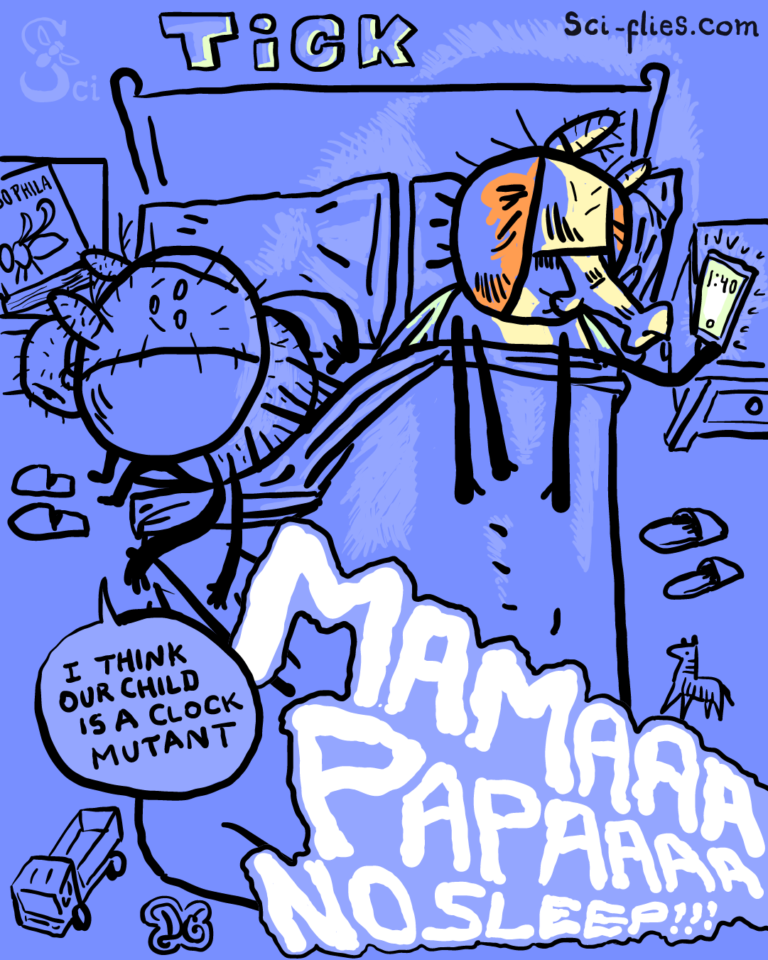
#tick tock goes the biological clock.
We could say that the current way we study the #genetics of #behavior and #neurobiology in #drosophila started with the biological clock.
The first #mutants discovered at the start of the 70s were three variants of a single #gene later called “period”.
One made the fly’s internal clock run fast -they behaved as if their day was shorter. Another ran slow and made the fly’s day longer. The third one left the fly without a perception of time.
Day 14 of #inktober2021. If you want to read more about this discovery, the story, and how these researchers thought their experiments out, go to our article about it.
I was behind on the tasks. Luckily I had time to start catching up. It was the weekend and Ana traveled with our son to visit friends. So I was free to spend two days doing whatever I wanted, which included finishing these drawings. With this in mind, the subject of this one may feel a bit “first-thought theater” but I thought it would be relatable.
15. Helmet
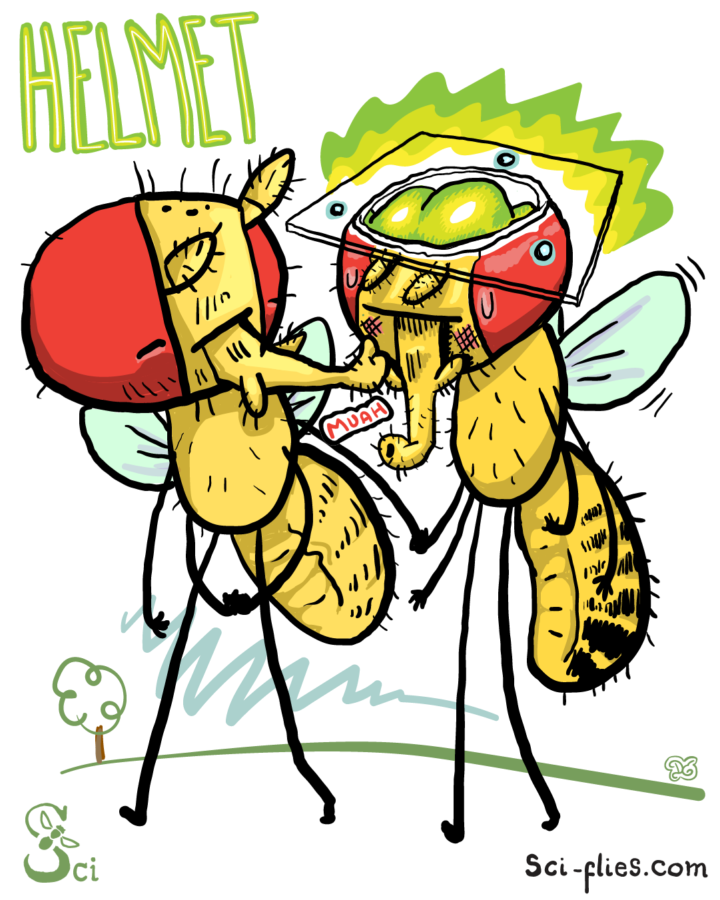
See-through #helmet. This is super cool, read on.
How can we study brain activity in an individual as they go about their day?
Last year a cool new method that uses #fruitflies was published. The researchers made a hole in the head of live male flies to film their brains.
They covered the hole with a thin glass slide, making a tiny window.
This window has tiny reflecting balls that a #microscopy system can track as the fly moves around.
The system tracks and films the #brain no matter where the fly goes.
These male flies express a protein in the brain that glows green when neurons involved in #courtship activate.
When regular female flies touched these male flies, their brains turned on, and the system quantified this activity.
This system will allow us to understand how circuits and neurons interact during complex behaviors in free, live animals.
This is day 15 of #inktober2021. Read the paper by Grover et al (2020)
The research behind this one is incredible. They can track the flies and image their brain as they freely move around. Super cool!
16. Compass
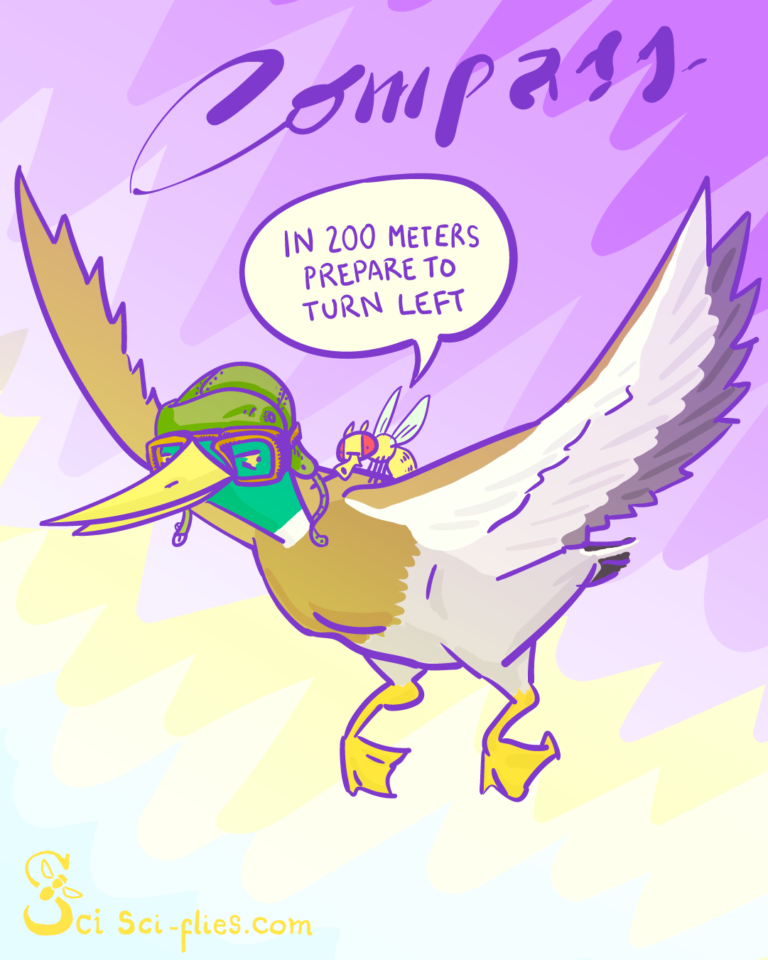
Want to learn about bird’s #compass? Study #fruitflies!
Birds can sense the earth’s #magnetic field. They use it as a compass to find their way in their long trips.
But, how do they do it?
Scientists made calculations and proposed a hypothesis: Magnetic fields induce chemical reactions on proteins sensitive to UV light called Cryptochromes, and this leads to neuronal signals.
How do we test this hypothesis?
Researchers found that fruitflies can sense magnetic fields but only if there is UV light.
Then, are Cryptochromes involved?
When researchers #mutated the fly’s Cryptochrome #gene to make it inactive, flies completely lost the hability to sense magnetic fields.
This was the first ever genetic proof that Cryptochromes are needed for magnetic sensation.
This highlights the power of #drosophila as a #model organism to answer general questions in #biology!
This is day 16 of #Inktober2021. I am finally caught up! If you want, you can read the research here: Gegear, et al (2008).
This one is my least favorite. I am not very happy about the drawing of the duck, I know I can do better. It is a perfectly good drawing though, and I caught-up. I like the font and the colors a lot.
17. Collide
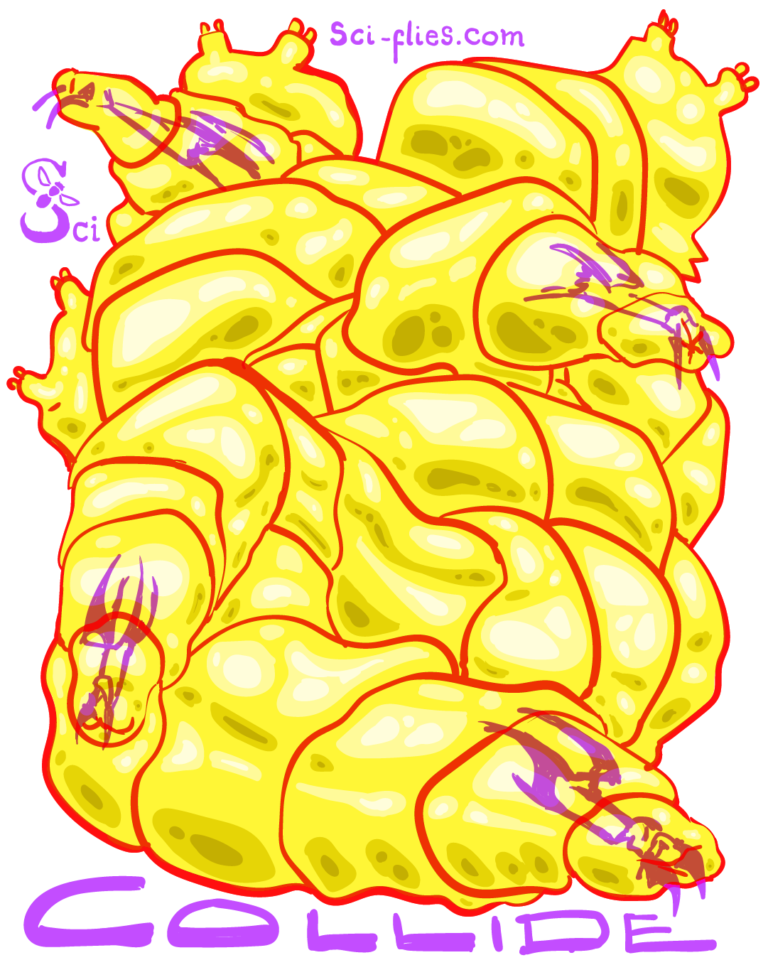
When larvae #collide. How do #fruitfly larvae navigate their environment?
Larvae have a distinct mode of movement. It involves going straight and changing direction left or right. Like humans driving a car.
They crawl forward, and at moments, they stop. They bend their “head” to a side and change direction, or do a sweeping motion and continue on to the other side.
They use their senses to #navigate. They can #smell and #taste food odors and pheromones. They also have rudimentary sense of #sight, which detects changes in light intensity.
They can see other #larvae and avoid collisions by reducing speed and changing directions. If they collide, they stop and take a moment before they resume crawling. Why? Maybe because they have to exchange insurance information.
This is day 17 of #inktober2021. The “collide” prompt made me think of larvae navigation, so I searched if someone had studied what happened during collisions between larvae. I found this nice paper: Otto, et al (2016). The tracking system and apparatus they use is also very cool.
This is one of my favorites. I am especially fond of larvae and simple drawings. I tried to give this one a sort of stamp-like feeling. I love the colors and would print it as a poster.
18. Moon
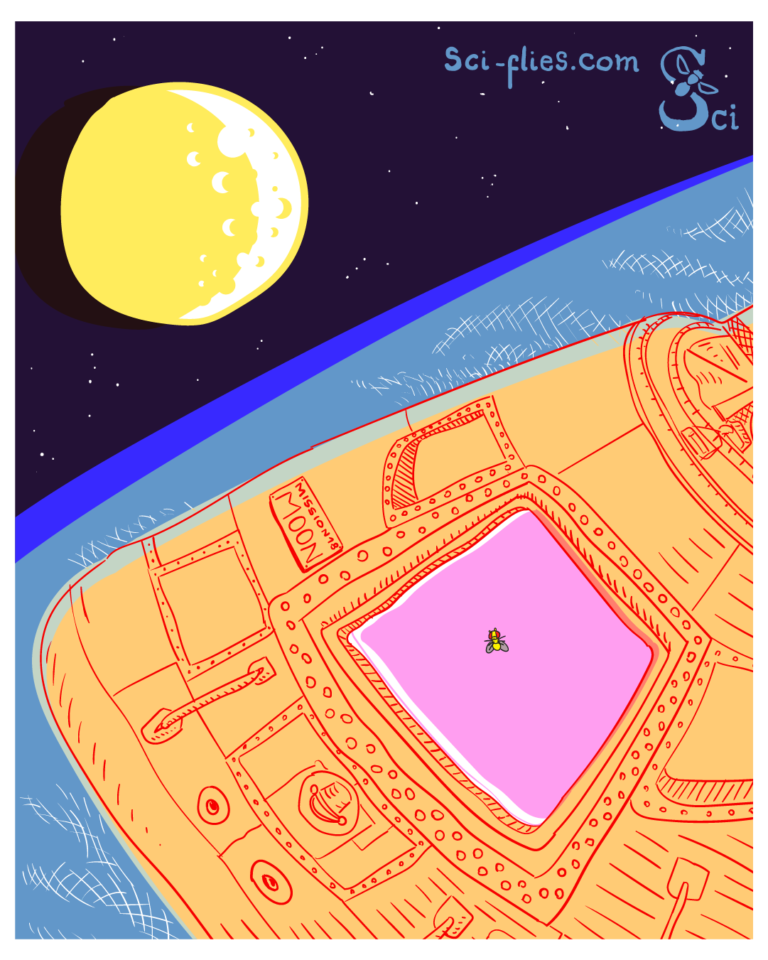
Fly me to the #moon. #fruitflies were the first non-human animals to see earth from #space.
In the 1940s intrepid flies launched from New Mexico in the US, on V2 rockets previously owned by Germany.
They reached 107 km, just above the 100 km official boundry of space.
These unsung heroes left earth to test whether living animals could resist the hardships of space flight, and the radiation levels in space.
They paved the way for other animals, such as mice, dogs, monkeys, and humans to explore space, and eventually reach the moon.
#Inktober2021 day 18. Source: Wikipedia and Royal Museums Greenwich website.
This is another favorite that I would totally print as a poster. Even though I cite Wikipedia and a museum website, I did go deeper in the research. I went through some declassified military documents I found on-line that listed the many experiments done with the V2 rockets. Sadly, they started writing details of each in the 50s. The experiments from the 40s did not have details on what they were about. So, I’ll go with the second hand sources I listed.
19. Loop
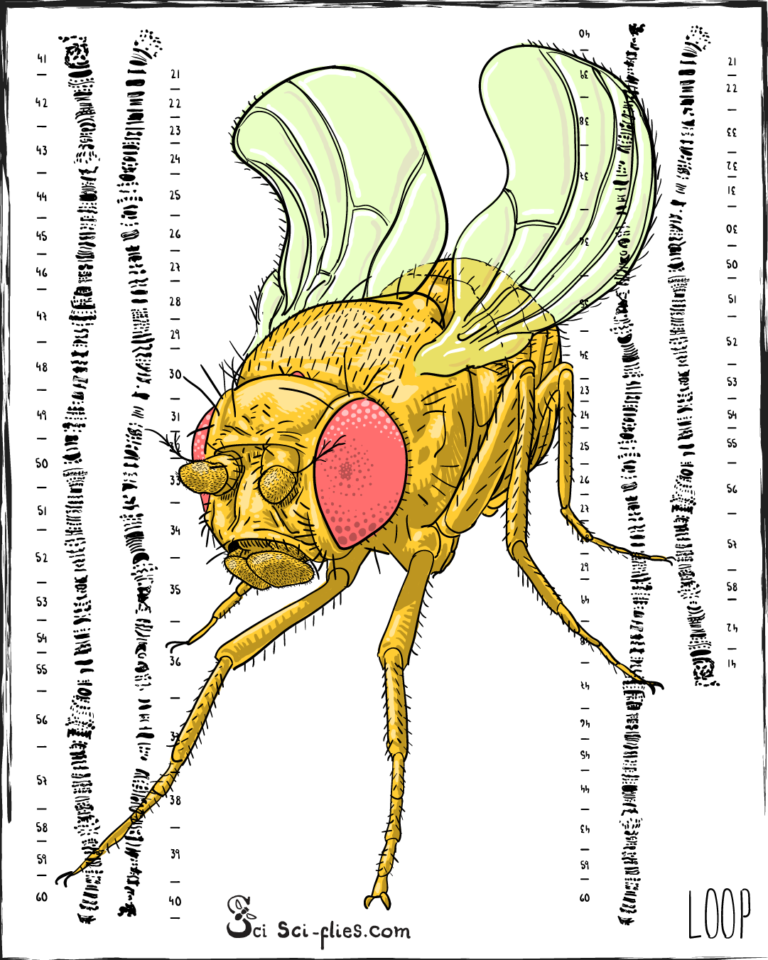
An infinite #loop. The #DNA #molecule is very long. To fit in the cell it is looped and looped again around proteins.
This way, it is packed into more a compact structure called #chromosome.
At the beginning of the 20th-century, work done on mutant #fruitflies showed that the chromosomes contained the #genes.
From this work we also got one of the most important tools for a #drosophila geneticist, the “balancer chromosome.” These are chromosomes that have inverted and missing parts.
They allow us to maintain stocks of #mutant flies that would otherwise be lost because of their lethality.
With them, we can visually follow mutations when we do fly crosses because balancers contain mutations that modify parts of the fly that we can see, like hairs, wings, or eyes.
A beloved balancer chromosome is called “Curly O”, which gives the fly these loopy wings.
This is day 19 of #inktober2021. I am late again, but who cares! I think this drawing would make a nice poster for a #flyroom What do you think?
I used CB Bridges’ (1935) drawings as a reference, and the excellent Atlas of Drosophila Morphology by Chyb and Gompel.
With this one I was just pandering to the Drosophila audience. The CurlyO balancer is a very beloved line of flies. Very disctinct and recognizable. I was thinking of a poster I would like to see hanging on a flyroom wall. I drew the fly by looking at many pictures and imagining how the fly would look from this angle and with curly wings. I traced over Bridges’ drawings of the 2nd chromosome (where the Curly marker is located) to make the normal chromosome depicted on the left side of the fly. Then, using Chyb and Gompel’s book as a reference, I rearranged the drawing to show how the chromosome should look in the CurlyO line. Nobody noticed. 😄
20. Sprout
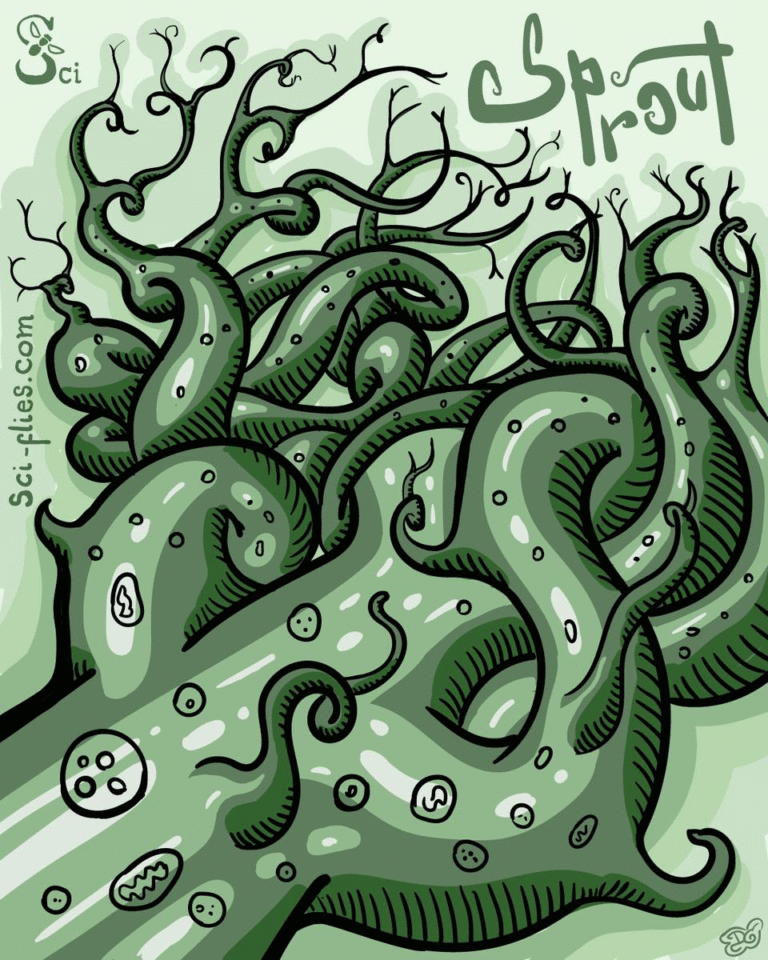
Another #sprout, another #model. What happens when nerves are damaged? How do they heal?
We can model this on the long larval nerves that control the #muscles. When an axon is damaged we observe new cell membrane sprout from the injury as the cell regenerates.
Looking at #mutants we can determine what #genes, #proteins, and #molecules are involved in #healing the #damage.
#Fruitflies are loved as a #modelorganism because of the huge amount of tools and techniques available, and how easy it is to work with them.
As we advance in the study of the #fly, we find new aspects of its #biology that can sprout new models for specific questions.
#Inktober2021 day 20. I am testing making short animation. Here is a review on the subject if you are interested.
First try at animation. There are only three frames. It was simple to make, but it involved getting the file through 2 websites to convert to gif and a looped mp4 for Twitter and Instagram. It was fun to do, and I like how it adds dynamism to the otherwise static image.
That is it for Part 2. Stay tuned for the last one!
